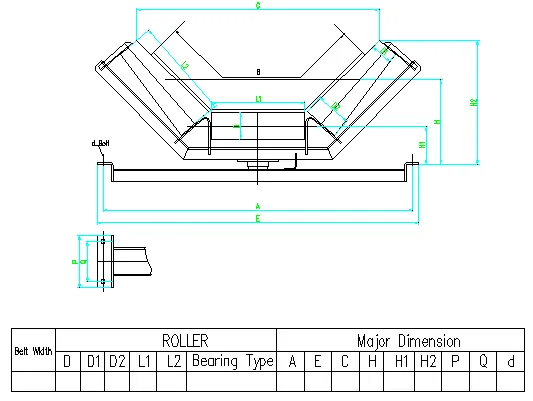 Afrikaans
Afrikaans  Albanian
Albanian  Amharic
Amharic  Arabic
Arabic  Armenian
Armenian  Azerbaijani
Azerbaijani  Basque
Basque  Belarusian
Belarusian  Bengali
Bengali  Bosnian
Bosnian  Bulgarian
Bulgarian  Catalan
Catalan  Cebuano
Cebuano  Corsican
Corsican  Croatian
Croatian  Czech
Czech  Danish
Danish  Dutch
Dutch  English
English  Esperanto
Esperanto  Estonian
Estonian  Finnish
Finnish  French
French  Frisian
Frisian  Galician
Galician  Georgian
Georgian  German
German  Greek
Greek  Gujarati
Gujarati  Haitian Creole
Haitian Creole  hausa
hausa  hawaiian
hawaiian  Hebrew
Hebrew  Hindi
Hindi  Miao
Miao  Hungarian
Hungarian  Icelandic
Icelandic  igbo
igbo  Indonesian
Indonesian  irish
irish  Italian
Italian  Japanese
Japanese  Javanese
Javanese  Kannada
Kannada  kazakh
kazakh  Khmer
Khmer  Rwandese
Rwandese  Korean
Korean  Kurdish
Kurdish  Kyrgyz
Kyrgyz  Lao
Lao  Latin
Latin  Latvian
Latvian  Lithuanian
Lithuanian  Luxembourgish
Luxembourgish  Macedonian
Macedonian  Malgashi
Malgashi  Malay
Malay  Malayalam
Malayalam  Maltese
Maltese  Maori
Maori  Marathi
Marathi  Mongolian
Mongolian  Myanmar
Myanmar  Nepali
Nepali  Norwegian
Norwegian  Norwegian
Norwegian  Occitan
Occitan  Pashto
Pashto  Persian
Persian  Polish
Polish  Portuguese
Portuguese  Punjabi
Punjabi  Romanian
Romanian  Russian
Russian  Samoan
Samoan  Scottish Gaelic
Scottish Gaelic  Serbian
Serbian  Sesotho
Sesotho  Shona
Shona  Sindhi
Sindhi  Sinhala
Sinhala  Slovak
Slovak  Slovenian
Slovenian  Somali
Somali  Spanish
Spanish  Sundanese
Sundanese  Swahili
Swahili  Swedish
Swedish  Tagalog
Tagalog  Tajik
Tajik  Tamil
Tamil  Tatar
Tatar  Telugu
Telugu  Thai
Thai  Turkish
Turkish  Turkmen
Turkmen  Ukrainian
Ukrainian  Urdu
Urdu  Uighur
Uighur  Uzbek
Uzbek  Vietnamese
Vietnamese  Welsh
Welsh  Bantu
Bantu  Yiddish
Yiddish  Yoruba
Yoruba  Zulu
Zulu Innovative Solutions for Efficient Conveyor System Components and Design
The Importance of Conveyor Components in Modern Industries
In the ever-evolving landscape of modern manufacturing and material handling, conveyor systems have become an integral part of the production process. At the heart of these systems are conveyor components, the unsung heroes that ensure the seamless operation of conveyors in various industries. This article delves into the critical roles played by these components, the different types available, and their significance in enhancing operational efficiency.
Conveyor systems are designed to move materials from one point to another with minimal human intervention. They can be found in diverse settings, from large warehouses to manufacturing plants, and even airports. The efficiency of these systems largely depends on the quality of their components, which include belts, rollers, pulleys, motors, controllers, and supports, among others.
1. Types of Conveyor Components
One of the primary components of any conveyor system is the belt. Conveyor belts are available in various materials, including rubber, plastic, metal, and fabric, each suited for specific applications. For instance, rubber belts are often used in heavy-duty applications due to their durability, while lighter plastic belts are employed in food handling and packaging.
Rollers are another vital component, serving as the support structure for the conveyor belt. They facilitate the smooth movement of the belt and help reduce friction, which is crucial for efficient operation. Depending on the type of conveyor, rollers can come in different designs powered to move loads or idler rollers which simply support the belt.
Pulleys and motors are essential for the conveyor's drive system. Pulleys help to redirect and stabilize the belt while also transmitting power from the motor. The choice of motor is equally important, as it needs to provide sufficient power to move the load while minimizing energy consumption. Variable frequency drives (VFDs) are commonly used to control the speed and torque of the motors, allowing for more precise operation.
2. The Role of Conveyor Components in Efficiency
conveyor component

The design and quality of conveyor components directly impact the overall efficiency of the conveyor system. High-quality components reduce downtime caused by breakdowns and increase system reliability. For example, using durable belts and rollers can minimize wear and tear, leading to longer service life and reduced maintenance costs.
Moreover, well-designed conveyor components can enhance safety within the workplace
. Implementing features such as emergency stop buttons and safety guards can prevent accidents, ensuring a safer working environment. Additionally, modern conveyor systems often incorporate sensors and automated controls, which can provide real-time data on system performance and alert operators to potential issues before they escalate.3. The Future of Conveyor Components
As industries continue to embrace automation and smart technology, the future of conveyor components looks promising. Innovations such as IoT-enabled sensors allow for predictive maintenance, helping businesses forecast potential failures and avoid costly downtimes. Furthermore, advancements in materials science are leading to the development of lighter yet stronger components, resulting in improved energy efficiency and reduced operational costs.
Sustainability is another significant trend influencing the design of conveyor components. Manufacturers are increasingly focusing on eco-friendly materials and energy-efficient systems to minimize their environmental impact. For instance, the adoption of recycled materials for conveyor belts is gaining traction as companies strive to meet sustainability goals.
Conclusion
In conclusion, conveyor components play a crucial role in the functionality and efficiency of conveyor systems across various industries. Their importance cannot be overstated, as they directly influence productivity, safety, and operational costs. As technology advances, the evolution of these components will likely continue, offering further enhancements that meet the ever-growing demands of modern industry. Investing in high-quality conveyor components is not only critical for immediate efficiency but also essential for fostering long-term sustainability and success in an increasingly competitive marketplace.
-
Revolutionizing Conveyor Reliability with Advanced Rubber Lagging PulleysNewsJul.22,2025
-
Powering Precision and Durability with Expert Manufacturers of Conveyor ComponentsNewsJul.22,2025
-
Optimizing Conveyor Systems with Advanced Conveyor AccessoriesNewsJul.22,2025
-
Maximize Conveyor Efficiency with Quality Conveyor Idler PulleysNewsJul.22,2025
-
Future-Proof Your Conveyor System with High-Performance Polyurethane RollerNewsJul.22,2025
-
Driving Efficiency Forward with Quality Idlers and RollersNewsJul.22,2025





























